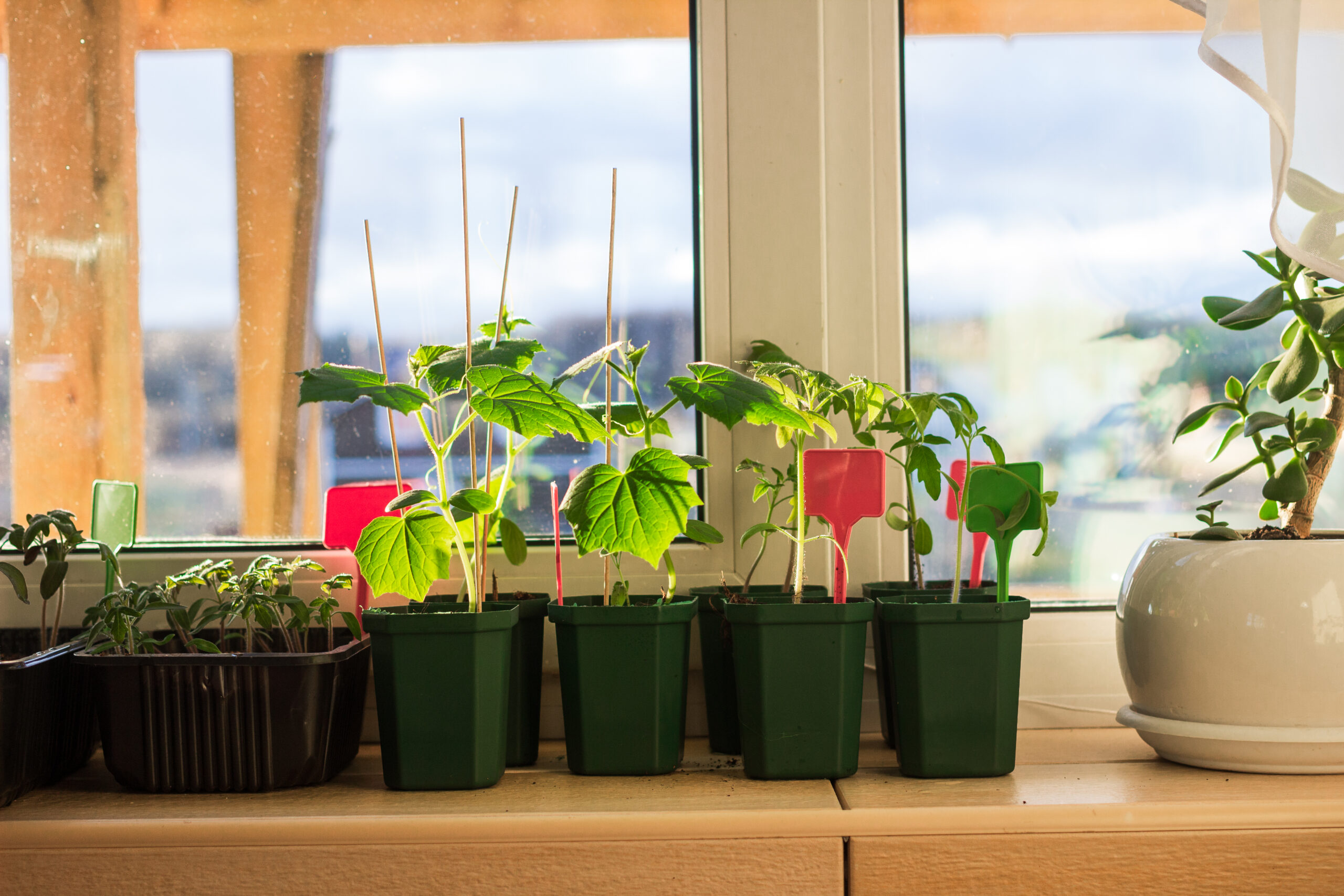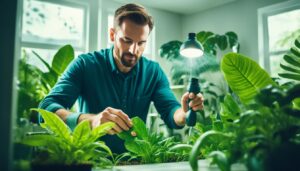Introduction:
In today’s world, where urban
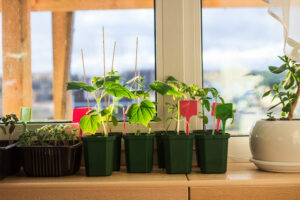
living often leaves us craving a connection to nature, the prospect of cultivating our own vegetables indoors offers a refreshing and economical solution. The allure of fresh, homegrown produce is undeniable, but many are deterred by the misconception that it requires vast outdoor space and a green thumb of mythical proportions. However, with the right knowledge and a modest setup, anyone can embark on the rewarding journey of indoor vegetable gardening.
Indoor vegetable gardening presents a number of benefits beyond the convenience of having fresh produce at your fingertips. It fosters a deeper appreciation for the food we consume, promotes sustainable living by reducing our carbon footprint, offers healthier options to the over production that products are run through, and serves as a therapeutic escape from the hustle and bustle of modern life. Whether you’re a seasoned gardener looking to expand your repertoire or a novice eager to dip your toes into the world of horticulture, growing vegetables indoors is an accessible and gratifying endeavor.
In this comprehensive guide, we will explore the ins and outs of indoor vegetable gardening, from selecting the right plants and creating an optimal growing environment to troubleshooting common challenges along the way. So, roll up your sleeves, dust off your gardening gloves, and let’s delve into the art of cultivating greenery within the confines of your own home.
Selecting the Right Vegetables for Indoor Growth
When it comes to indoor vegetable gardening, not all plants are created equal. Some thrive in the controlled environment of your home, while others may struggle to adapt. To set yourself up for success, it’s crucial to choose vegetables that are well-suited to indoor conditions. Here, we’ll explore a variety of options ranging from leafy greens to compact root vegetables, each tailored to flourish within the confines of your indoor garden.
- Leafy Greens: Leafy greens are among the most popular choices for indoor gardening due to their relatively low maintenance requirements and rapid growth. Varieties such as spinach, lettuce, kale, and Swiss chard thrive in containers and require minimal space to flourish. These versatile greens can be harvested continuously by simply snipping off outer leaves, ensuring a steady supply of fresh, nutrient-rich foliage for your culinary endeavors.
- Herbs: Fresh herbs add a burst of flavor to any dish and are a staple in indoor gardens. Compact herbs like basil, parsley, cilantro, and chives are well-suited to indoor cultivation, thriving in containers on sunny windowsills or under grow lights. Not only do they enhance the taste of your meals, but they also contribute to a fragrant and visually appealing indoor environment.
- Compact Root Vegetables: While traditional root vegetables like carrots and potatoes may require more space than the average indoor gardener can afford, there are plenty of compact alternatives that are perfectly suited to indoor cultivation. Radishes, turnips, and beets are excellent choices, as they produce edible roots in a relatively short amount of time and can be grown in shallow containers or raised beds.
- Microgreens: If you’re short on space or patience, Microgreens offer a convenient and speedy solution to your indoor gardening aspirations. These tender, immature greens are harvested shortly after germination, making them ideal for small-scale cultivation. Popular microgreen varieties include arugula, broccoli, mustard, and sunflower, each imparting a unique flavor and nutritional profile to your dishes.
- Compact Fruiting Plants: While the prospect of growing full-sized tomatoes or peppers indoors may seem daunting, there are compact varieties specifically bred for container gardening. Cherry tomatoes, dwarf peppers, and bush cucumbers are well-suited to indoor cultivation, provided they receive ample sunlight and proper support for their growing vines.
Creating an Optimal Growing Environment
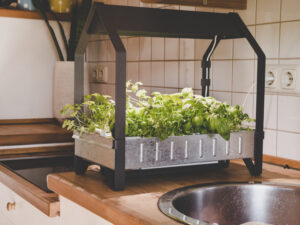
Establishing an optimal growing environment is essential to the success of your indoor vegetable garden. While you may not have the luxury of controlling outdoor factors like sunlight and temperature, there are several key elements you can adjust to ensure your plants thrive within the confines of your home. From lighting and temperature to humidity and airflow, every aspect of your indoor garden requires careful consideration and attention to detail.
- Lighting: Adequate lighting is perhaps the most critical factor in indoor gardening, as most vegetables require ample sunlight to photosynthesize and produce energy. While natural sunlight is ideal, it may be insufficient, especially during the winter months or in homes with limited exposure to the sun. Supplemental lighting in the form of grow lights can help fill the gap, providing your plants with the spectrum of light they need to flourish. LED grow lights are the preferred choice for indoor gardening due to their energy efficiency, adjustable spectrum, and longevity.
- Temperature: Maintaining the right temperature is crucial for promoting healthy growth and development in your indoor garden. Most vegetables thrive in temperatures between 65°F and 75°F during the day and slightly cooler temperatures at night. Avoid placing your plants near drafty windows or heat sources, as extreme fluctuations can stress or damage delicate foliage. A programmable thermostat can help regulate indoor temperatures, ensuring a stable environment for your plants to thrive.
- Humidity: Proper humidity levels are essential for preventing moisture-related issues like mold, mildew, and fungal diseases in your indoor garden. While some vegetables prefer higher humidity levels, others may thrive in drier conditions. Monitor humidity levels using a hygrometer and adjust accordingly by misting your plants, using a humidifier, or placing trays of water near heat sources to increase moisture in the air. Adequate airflow is also crucial for preventing stagnant air and promoting transpiration, which helps regulate humidity levels within your indoor garden.
- Airflow: Good air circulation is essential for preventing the buildup of heat, humidity, and airborne pathogens in your indoor garden. Positioning fans strategically can help circulate air throughout your space, ensuring consistent airflow around your plants. Avoid overcrowding your plants, as this can impede airflow and create microclimates conducive to pests and disease. Regularly inspect your plants for signs of wilting, yellowing, or fungal growth, as these may indicate inadequate airflow or poor ventilation.
Container Selection and Soil Considerations
Choosing the right containers and soil is crucial for the success of your indoor vegetable garden. The containers you select will not only affect the aesthetic appeal of your garden but also play a significant role in providing adequate drainage, aeration, and root space for your plants. Similarly, the type of soil you use will impact the nutrient availability, water retention, and overall health of your vegetable crops. Here, we’ll explore the various options for containers and soil, along with considerations for each.
- Container Options:
- Plastic Pots: Lightweight and affordable, plastic pots are a popular choice for indoor gardening. They come in a variety of sizes, shapes, and colors, making them suitable for a wide range of vegetables. Look for pots with drainage holes at the bottom to prevent waterlogged soil and root rot.
- Terracotta Pots: Known for their porous nature, terracotta pots allow for better airflow and moisture regulation in the soil. However, they can dry out more quickly than plastic pots, requiring more frequent watering. Choose glazed terracotta pots to minimize moisture loss and prolong the life of your containers.
- Fabric Grow Bags: Fabric grow bags are breathable, lightweight, and foldable, making them ideal for small spaces and temporary gardens. They promote air pruning of roots, preventing them from becoming root-bound and promoting healthier growth. Fabric grow bags come in various sizes and are reusable, making them an eco-friendly option for indoor gardening.
- Self-Watering Containers: For busy gardeners or those prone to forgetting to water their plants, self-watering containers offer a convenient solution. These containers feature a reservoir that holds water, allowing plants to draw moisture as needed through capillary action. Self-watering containers help maintain consistent soil moisture levels and reduce the risk of overwatering or underwatering your plants.
- Soil Considerations:
- Potting Mix: Choose a high-quality potting mix specifically formulated for container gardening. Avoid using garden soil, as it may compact over time, impeding drainage and root growth. Look for potting mixes that contain ingredients like peat moss, perlite, and vermiculite for improved aeration, drainage, and moisture retention.
- Soil Amendments: Depending on the nutritional needs of your plants, you may need to amend your potting mix with organic matter or fertilizer. Compost, aged manure, and worm castings are excellent options for enriching the soil and providing essential nutrients to your vegetable crops. Avoid over-fertilizing, as this can lead to nutrient imbalances and burn your plants’ roots.
- pH Levels: Test the pH of your potting mix using a soil pH meter or testing kit to ensure it falls within the optimal range for your vegetables. Most vegetables prefer slightly acidic soil with a pH between 6.0 and 7.0. If necessary, adjust the pH of your soil using amendments like lime or sulfur to create a more hospitable environment for your plants.
Watering and Nutrient Management
Proper watering and nutrient
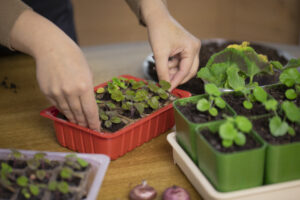
management are essential aspects of indoor vegetable gardening, as they directly impact the health, growth, and productivity of your plants. Unlike outdoor gardens, where plants may receive water and nutrients from rainfall and natural soil composition, indoor gardens rely entirely on the gardener for these essential elements. Here, we’ll discuss strategies for watering your indoor vegetable garden effectively and managing nutrient levels to ensure optimal plant health and productivity.
- Watering Techniques:
- Monitor Soil Moisture: Before watering your plants, always check the moisture level of the soil to prevent overwatering or underwatering. Stick your finger into the soil up to the first knuckle or use a moisture meter to gauge soil moisture. Water only when the top inch of soil feels dry to the touch, as excessive moisture can lead to root rot and other fungal diseases.
- Watering Frequency: The frequency of watering will vary depending on factors such as plant species, container size, and environmental conditions. Generally, it’s better to water deeply and infrequently rather than shallowly and frequently to encourage deep root growth. Allow excess water to drain freely from the bottom of containers to prevent waterlogged soil.
- Morning Watering: Water your plants in the morning to minimize the risk of fungal diseases and evaporation loss. Morning watering allows plants to absorb moisture more efficiently during the day and ensures they enter the night with adequate hydration. Avoid watering during the hottest part of the day to prevent water from evaporating before it can be absorbed by the roots.
- Nutrient Management:
- Fertilizer Application: Indoor vegetable plants rely on regular fertilization to replenish nutrients depleted from the soil over time. Choose a balanced, water-soluble fertilizer specifically formulated for vegetable plants and follow the manufacturer’s instructions for application rates and frequency. Avoid over-fertilizing, as this can lead to nutrient imbalances and damage to your plants.
- Organic Amendments: Incorporating organic amendments such as compost, worm castings, and compost tea into your soil mix can provide a steady supply of nutrients to your plants while improving soil structure and fertility. Organic amendments release nutrients slowly over time, reducing the risk of nutrient leaching and runoff.
- Hydroponic Systems: For those interested in advanced nutrient management techniques, hydroponic systems offer a precise and efficient way to deliver nutrients directly to plant roots. Hydroponic systems eliminate the need for soil altogether, allowing plants to absorb nutrients more readily and grow faster. Popular hydroponic systems for indoor vegetable gardening include deep water culture, nutrient film technique, and ebb and flow systems.
Pest and Disease Management
Maintaining a healthy indoor vegetable garden requires vigilance against pests and diseases that can wreak havoc on your plants. While indoor environments may offer some protection against outdoor pests, they are not immune to infestations or disease outbreaks. Implementing preventive measures and early detection strategies is essential for keeping your indoor garden thriving and pest-free. Here, we’ll discuss common pests and diseases that affect indoor vegetable gardens and strategies for managing them effectively.
- Common Pests:
- Aphids: These tiny, sap-sucking insects can quickly multiply and infest your indoor garden, causing stunted growth and distorted foliage. Look for clusters of small, soft-bodied insects on the undersides of leaves and along stems. To control aphids, spray your plants with a strong stream of water to dislodge them or apply insecticidal soap or neem oil to suffocate and repel them.
- Whiteflies: Whiteflies are small, moth-like insects that feed on the sap of plants, causing yellowing leaves and stunted growth. They are often found congregating on the undersides of leaves, where they lay their eggs. To control whiteflies, introduce natural predators like ladybugs or lacewings, or use sticky traps to capture adult insects.
- Spider Mites: These minuscule pests feed on plant juices, leaving behind fine webbing and stippled leaves. Spider mites thrive in warm, dry environments and can quickly decimate your indoor garden if left unchecked. To control spider mites, increase humidity levels, prune infested plant parts, and apply insecticidal soap or horticultural oil to suffocate and kill them.
- Fungus Gnats: Fungus gnats are small, dark-colored flies that lay their eggs in damp soil. The larvae feed on organic matter and plant roots, leading to weakened plants and yellowing foliage. To control fungus gnats, allow the soil to dry out between waterings, avoid overwatering your plants, and use sticky traps to capture adult insects.
- Common Diseases:
- Powdery Mildew: Powdery mildew is a fungal disease that thrives in warm, humid environments, causing white, powdery patches to form on plant leaves and stems. To control powdery mildew, increase air circulation around your plants, avoid overcrowding them, and apply fungicidal sprays containing sulfur or potassium bicarbonate.
- Leaf Spot: Leaf spot is a fungal disease characterized by brown or black spots forming on plant leaves, often surrounded by a yellow halo. It spreads rapidly in moist conditions and can weaken or kill affected plants if left untreated. To control leaf spot, remove and destroy infected plant parts, improve air circulation, and apply fungicidal sprays as needed.
- Root Rot: Root rot is a common problem in indoor gardens caused by overwatering or poorly drained soil, leading to the decay of plant roots. Symptoms include wilting, yellowing foliage, and a foul odor emanating from the soil. To prevent root rot, ensure proper drainage in your containers, allow the soil to dry out between waterings, and avoid overwatering your plants.
Conclusion: Cultivating a Flourishing Indoor Vegetable Garden
In conclusion, embarking on
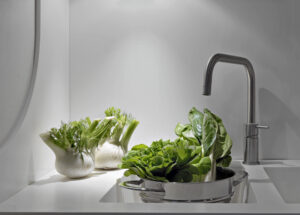
the journey of indoor vegetable gardening opens up a world of possibilities for cultivating fresh, nutritious produce right in the comfort of your own home. Through careful selection of plants, creation of an optimal growing environment, and diligent management of watering, nutrients, pests, and diseases, anyone can enjoy the rewards of a flourishing indoor garden.
By selecting the right vegetables for indoor growth, such as leafy greens, herbs, compact root vegetables, microgreens, and compact fruiting plants, you can tailor your garden to suit your space, preferences, and culinary needs. Choosing the appropriate containers and soil mixtures ensures proper drainage, aeration, and nutrient availability for your plants, setting the stage for healthy growth and abundant harvests.
Creating an optimal growing environment involves managing lighting, temperature, humidity, and airflow to mimic outdoor conditions and promote optimal plant health. Supplemental lighting, proper ventilation, and regular monitoring of environmental parameters are essential for providing your plants with the conditions they need to thrive.
Watering and nutrient management are critical aspects of indoor vegetable gardening, requiring attention to soil moisture, fertilizer application, and pH levels to ensure healthy growth and development. Preventing and managing pests and diseases through integrated pest management strategies is essential for safeguarding your indoor garden and preserving the health and productivity of your plants.
In essence, indoor vegetable gardening is a fulfilling and rewarding pursuit that offers numerous benefits, from providing fresh, homegrown produce to fostering a deeper connection to nature and promoting sustainable living. With patience, dedication, and a bit of green-thumb know-how, you can cultivate a flourishing indoor garden that nourishes both body and soul. So, roll up your sleeves, dig in the dirt, and let the joy of gardening take root in your home. If you would like to see more of our fun feel free to check out Michelle on youtube and grow in your gardening pursuits.
We hope to continue to be a resource for your gardening fun. Please visit us at The Landscape Connection if you ever are in our neck of the woods.


